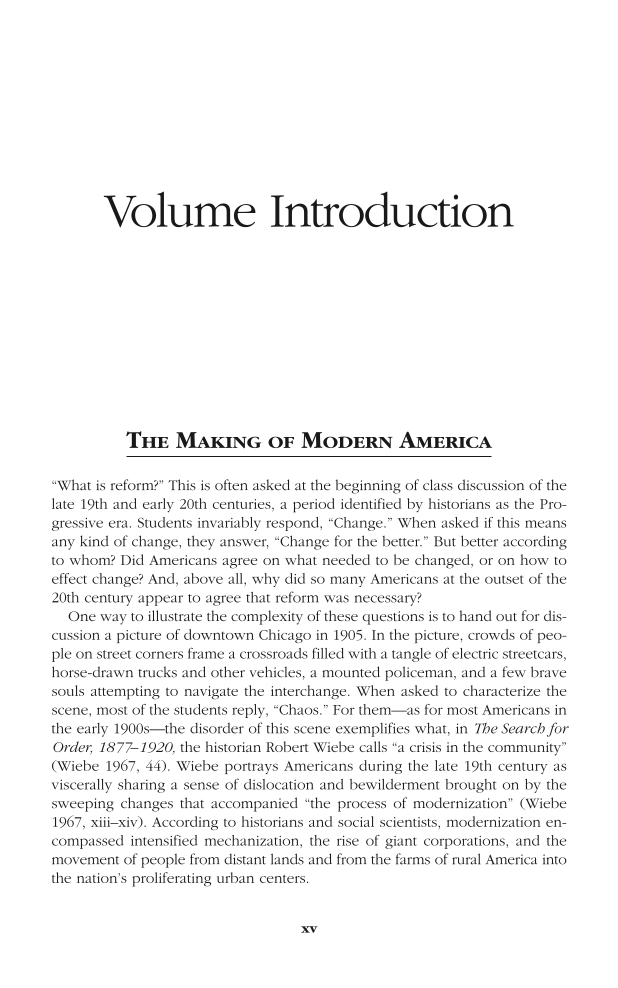Volume Introduction THE MAKING OF MODERN AMERICA “What is reform?” This is often asked at the beginning of class discussion of the late 19th and early 20th centuries, a period identified by historians as the Pro- gressive era. Students invariably respond, “Change.” When asked if this means any kind of change, they answer, “Change for the better.” But better according to whom? Did Americans agree on what needed to be changed, or on how to effect change? And, above all, why did so many Americans at the outset of the 20th century appear to agree that reform was necessary? One way to illustrate the complexity of these questions is to hand out for dis- cussion a picture of downtown Chicago in 1905. In the picture, crowds of peo- ple on street corners frame a crossroads filled with a tangle of electric streetcars, horse-drawn trucks and other vehicles, a mounted policeman, and a few brave souls attempting to navigate the interchange. When asked to characterize the scene, most of the students reply, “Chaos.” For them—as for most Americans in the early 1900s—the disorder of this scene exemplifies what, in The Search for Order, 1877–1920, the historian Robert Wiebe calls “a crisis in the community” (Wiebe 1967, 44). Wiebe portrays Americans during the late 19th century as viscerally sharing a sense of dislocation and bewilderment brought on by the sweeping changes that accompanied “the process of modernization” (Wiebe 1967, xiii–xiv). According to historians and social scientists, modernization en- compassed intensified mechanization, the rise of giant corporations, and the movement of people from distant lands and from the farms of rural America into the nation’s proliferating urban centers. xv
Document Details My Account Print multiple pages
Print
You have printed 0 times in the last 24 hours.
Your print count will reset on at .
You may print 0 more time(s) before then.
You may print a maximum of 0 pages at a time.




























































































































































































































































































































































































































































































































































































































































































































































































































































































































































































































































































































































































































































































































































































































































































































































































































































































































































































































































































































































































































































































































































































































































































































































































































































































































































































































































































































































































































































































































































































































































































































































































































































































































































































































































































































































































































































































































































































































































































































































































































































































































































































































































































































































































































































































































































































































































































































































































































































































































































































































































